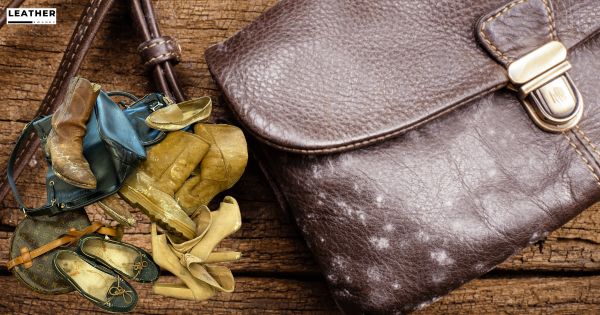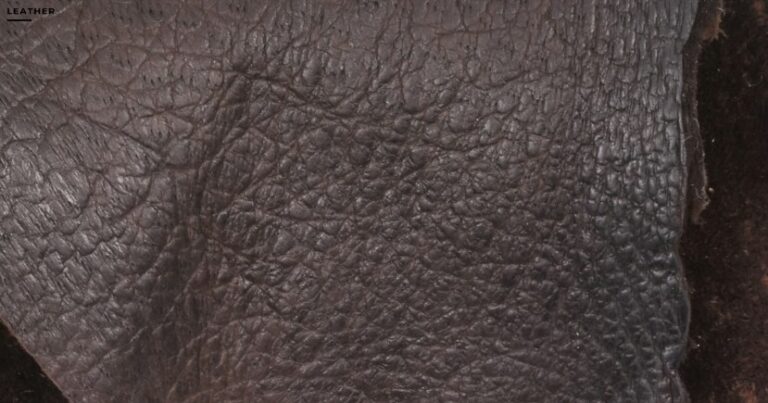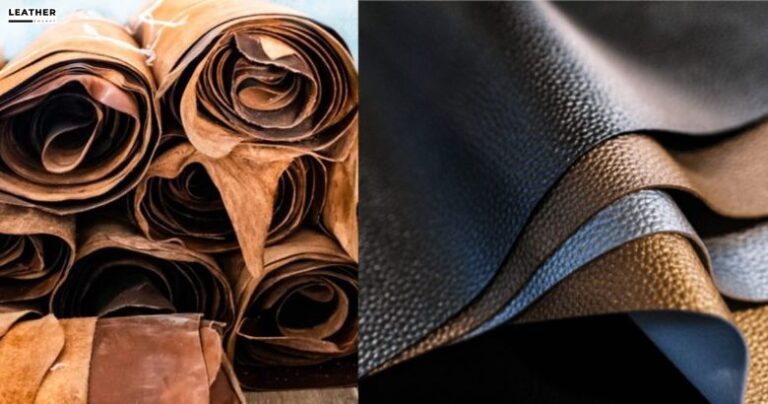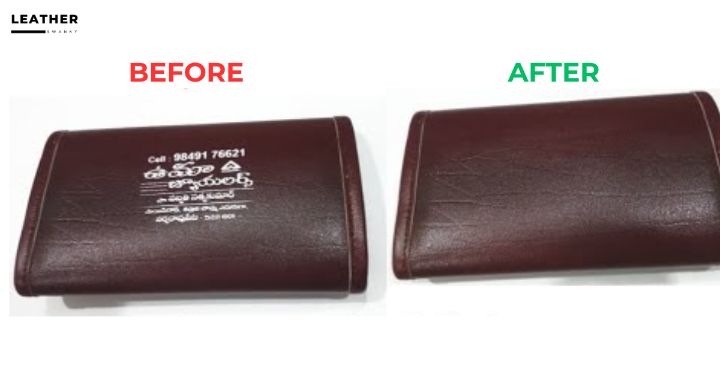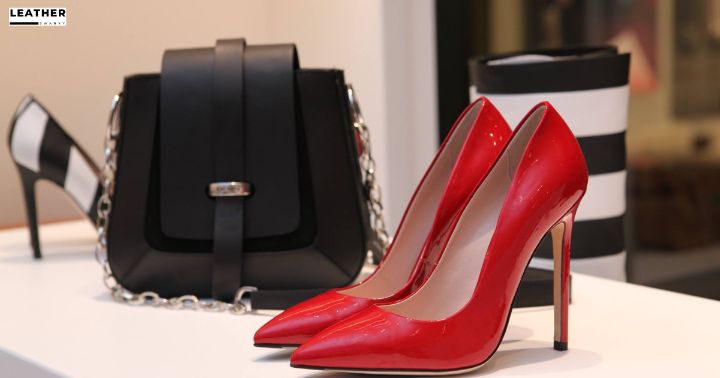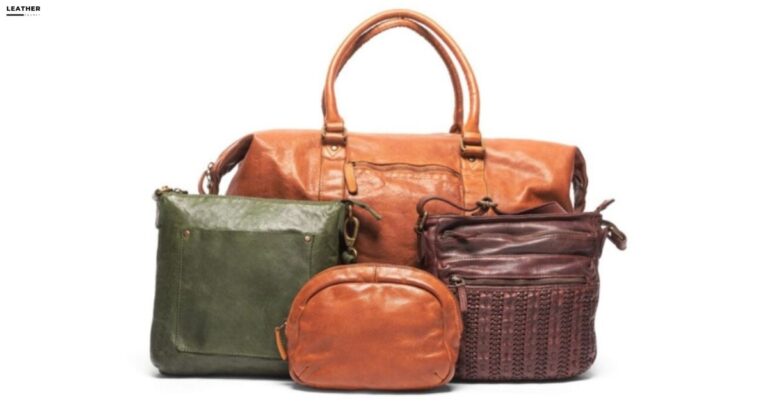What Is Bovine Leather? All You Need To Know

We know that leather is a popular material with many uses, but what is bovine leather?
Bovine leather is a type of genuine leather made from the hide of a cow, and it has its own unique properties that make it a highly sought-after material. It is incredibly durable and strong, making it an ideal material for items such as wallets, bags, shoes, and belts.
In this article, we’ll discuss the bovine leather tanning process, its characteristics, differences from other types of leather, uses and applications, durability, pros and cons, and how to care for it.
Jump to a Specific Section
- 1 Key Takeaways
- 2 The Tanning Process for Bovine Leather
- 3 Characteristics of Bovine Leather
- 4 Differences Between Bovine Leather and Other Types of Leather
- 5 Types of Bovine Leather
- 6 Uses and Applications of Bovine Leather
- 7 Durability of Bovine Leather
- 8 Pros and Cons of Bovine Leather
- 9 Care and Maintenance of Bovine Leather
- 10 Final Thoughts
- 11 Frequently Asked Questions
- 11.1 What Are the Environmental Impacts of Producing Bovine Leather?
- 11.2 How Does the Price of Bovine Leather Compare to Other Types of Leather?
- 11.3 Is Bovine Leather Suitable for Use in All Climates?
- 11.4 Is Bovine Leather Stain Resistant?
- 11.5 Can Bovine Leather Be Recycled or Reused?
- 11.6 What is bovine leather?
- 11.7 How is bovine leather made?
- 11.8 What is the difference between bovine leather and calf leather?
- 11.9 Why is bovine leather commonly used?
- 11.10 How do I care for bovine leather?
- 11.11 What does bovine leather look like?
- 11.12 How is bovine leather different from other types of leather?
- 11.13 How is bovine leather valued in the leather goods industry?
- 11.14 Can bovine leather be made into different products?
- 11.15 Is it easy to care for bovine leather?
- 12 Resources Used for Research
Key Takeaways
- Bovine leather is highly sought after for its durability, strength, and resistance to water, liquids, abrasions, and scratches.
- Full-grain bovine leather is considered the highest quality with a luxurious look and feel.
- Bovine leather is used in the production of furniture, clothing, shoes, and accessories.
- Regular cleaning, conditioning, and proper storage are necessary for maintaining the longevity of bovine leather.
The Tanning Process for Bovine Leather
The tanning process is a complex process involving the removal of moisture, fat, and hair from the hide.
It is a process that transforms raw hides into cowhide leather. It’s a lengthy process that requires specialized equipment and expertise.
The first step in the tanning process is the curing of the hide. This process includes the fleshing, deliming, soaking, pickling, and bating.
The hide is then tanned using a variety of methods, such as vegetable tanning, chromium tanning, and aldehyde tanning.
Once the hide has been tanned, it is then finished to give it the desired look, feel, color, and weight. This finishing process includes dyeing, shaving, buffing, and oiling.
The tanning process for bovine leather requires:
- Expertise in the art of tanning
- Specialized equipment
- Sufficient time to cure and finish the hide
The tanning process for bovine leather is an essential step in making beautiful cowhide leather out of raw hides.
Characteristics of Bovine Leather
Bovine leather is one of the most popular types of leather because it is known for its strength, durability, and high quality.
It is made from the hides of cows and is a great choice for a variety of uses. As a leather type, bovine leather is known for its:
- Longevity – Bovine leather is highly durable and can last for years, even with regular use.
- Strength – This type of leather is strong enough to stand up to wear and tear, making it a great choice for a variety of applications.
- Versatility – Bovine leather is used in a variety of products, including clothing, furniture, and accessories.
Bovine leather is a great choice for those looking for high-quality leather with the desired characteristics.
From its strength and durability to its versatility, bovine leather is a great choice for a variety of uses.
Differences Between Bovine Leather and Other Types of Leather
Bovine leather is a type of leather made from the hides of bovine animals, such as cows, bulls, and oxen.
It is generally thicker and more durable than other types of leather. It’s also known for its unique grain and texture, which makes it a popular choice for furniture and fashion.
Here are some of the key differences between bovine leather and other leather types:
- Bovine leather is much more durable and long-lasting
- It is also resistant to water and stains
- It has a unique grain and texture that sets it apart from other leather types
Types of Bovine Leather

Bovine leather is derived from the hides of cows and is considered one of the strongest and most durable types of leather.
There are three main types of bovine leather:
- Full grain bovine leather: This type of bovine leather is made from the highest quality animal hide and is the most expensive. It is the most durable and has the most natural markings, making it the most sought-after type of bovine leather.
- Crust bovine leather: This type of bovine leather is made from a hide that has been processed and dyed. It is less expensive than full-grain leather but is still durable and has a uniform appearance.
- Cow leather: This is the most common type of bovine leather and is usually made from lower-quality animal hides. It is the most affordable type of bovine leather but is not as durable as full-grain and crust leather.
Uses and Applications of Bovine Leather
Bovine leather is a versatile material that can be used to create a variety of leather products and items.
Here are some of the common uses and applications of bovine leather:
- Clothing and Accessories: Bovine leather is often used to make clothing and accessories, such as shoes, jackets, hats, and gloves.
- Furniture: Bovine leather is also used to make furniture, such as couches, ottomans, and chairs.
- Automotive Upholstery: Bovine leather is a popular choice for automotive upholstery, such as car seats and car interiors.
These uses and applications of bovine leather demonstrate why it has become a popular material choice in the leather market.
Durability of Bovine Leather
Bovine leather is known to be one of the most durable leathers available, with an average lifespan of 10-20 years.
Bovine leather is made of full-grain bovine, which is the highest quality available. It is characterized by its natural grain pattern, which gives it strength and flexibility.
It is also very resistant to water, stains, and scratches, making it ideal for many applications.
| Features | Bovine Leather | Cowhide Leather |
|---|---|---|
| Durability | 10-20 years | 5-10 years |
| Quality | Full grain | Medium grain |
| Water Resistance | Very resistant | Resistant |
The durability of bovine leather makes it an ideal choice for furniture, bags, and other leather goods. It is also a popular choice for shoes because of its strong, flexible nature.
Pros and Cons of Bovine Leather
Bovine leather is a popular choice for leather goods such as jackets, shoes, and handbags. It is made from the skins of bovine animals like cows, oxen, and buffaloes.
Pros of bovine leather include:
- Durability: Bovine leather is extremely strong and durable, making it an ideal choice for furniture and clothing that needs to withstand wear and tear.
- Flexibility: Bovine leather is also highly flexible, making it easier to work with when creating garments or accessories.
- Appearance: Bovine leather has a unique texture and appearance that makes it stand out from other types of leather.
Cons of bovine leather include:
- Cost: Bovine leather is typically more expensive than other leathers due to its strength and durability.
- Care: Bovine leather requires more care and maintenance than other leathers, as it is more prone to cracking and fading if not properly cared for.
- Difference: It is important to note that there is a difference between bovine leather and other types of leather, which can affect the quality of the product.
When considering bovine leather, it is important to weigh the pros and cons to ensure you are making the right decision.
Care and Maintenance of Bovine Leather
Bovine leather is a durable, stylish material that can last for years with proper care and maintenance.
To ensure your bovine leather lasts, here are a few key guidelines to keep in mind:
- Clean the leather regularly with a soft cloth to keep it in top condition and reduce the risk of damage.
- Condition the leather regularly with a leather conditioner that is specifically designed for bovine leather.
- Avoid using lower-quality leather products, such as white vinegar or rubbing alcohol, as these can damage the leather.
When caring for and maintaining your bovine leather, it is important to remember that grain and full-grain bovine leather have different needs.
Full-grain bovine leather should be conditioned more often than grain leather to prevent it from drying out.
It is also important to remember that bovine leather will not be waterproof unless it is treated with a waterproofing agent.
In addition sunlight can cause the leather to fade and crack, so keep it out of direct sunlight when possible.
Final Thoughts
We’ve learned that bovine leather is real leather and has a unique set of characteristics. It’s strong and durable and can be used for a variety of purposes.
The tanning process gives it a unique look and feel. With proper care and maintenance, bovine leather can last a lifetime.
Overall, bovine leather is an excellent choice for anyone looking for a high-quality leather product.
Frequently Asked Questions
What Are the Environmental Impacts of Producing Bovine Leather?
We’ve found that producing bovine leather often has an environmental impact. It can cause deforestation, air and water pollution, and the disruption of animal habitats. Additionally, the tanning process can produce toxic chemicals that can be released into the environment.
How Does the Price of Bovine Leather Compare to Other Types of Leather?
We find that bovine leather is generally more expensive than other types of leather. Its high quality, durability, and craftsmanship make it a worthwhile investment.
Is Bovine Leather Suitable for Use in All Climates?
We believe bovine leather is suitable for use in most climates. Its strong and durable fibers make it an ideal material for year-round use, whether it’s hot or cold outside. Its durability also helps it to last for years, making it a great value.
Is Bovine Leather Stain Resistant?
We have found that bovine leather is relatively stain resistant, though some staining may occur with certain types of materials. Generally, it is a good choice for items that will be exposed to spills and other messes.
Can Bovine Leather Be Recycled or Reused?
Yes, bovine leather can be recycled or reused. It’s durable and strong, making it a great choice for upcycling or repurposing. With proper care, it can be repurposed into something entirely new.
What is bovine leather?
Bovine leather is a type of leather that is made from the hides of cows or cattle. It is a form of genuine leather that is commonly used in the leather goods industry.
How is bovine leather made?
Bovine leather is made by tanning the hides of cows or cattle. The process involves treating the animal hide with chemicals to remove any hair, flesh, or fat and then treating it with tanning agents to preserve and strengthen the leather.
What is the difference between bovine leather and calf leather?
Bovine leather refers to leather made from the hides of cows or cattle, while calf leather refers specifically to leather made from the hides of young cows. Calf leather is known for its softness and fine grain, while bovine leather can vary in texture depending on the specific hide used.
Why is bovine leather commonly used?
Bovine leather is commonly used because it is a durable and versatile material that can be made into a wide variety of leather goods. It is also readily available and relatively affordable compared to other types of leather.
How do I care for bovine leather?
To care for bovine leather, it is recommended to clean it regularly with a soft, damp cloth and mild soap. Avoid using harsh chemicals or abrasive cleaners, as they can cause the leather to become damaged. It is also important to keep bovine leather away from direct sunlight and extreme temperatures to prevent fading and cracking.
What does bovine leather look like?
Bovine leather can vary in appearance depending on the specific hide used. It typically has a natural grain pattern and may have some imperfections or markings that add character to the leather. Bovine leather can come in a range of colors and finishes, from smooth and shiny to more textured and matte.
How is bovine leather different from other types of leather?
Bovine leather is different from other types of leather in terms of the animal source and the specific characteristics of the leather. For example, sheepskin leather is made from the hides of sheep and is known for its softness, while bovine leather is made from the hides of cows or cattle and is generally more durable.
How is bovine leather valued in the leather goods industry?
Bovine leather is highly valued in the leather goods industry for its durability, versatility, and wide availability. It is commonly used to make leather jackets, bags, shoes, belts, and other leather items. The quality and appearance of bovine leather can vary depending on factors such as the tanning process and the specific hide used.
Can bovine leather be made into different products?
Yes, bovine leather can be made into a wide range of leather products. Its durability and versatility make it suitable for items such as leather jackets, bags, wallets, belts, and furniture upholstery.
Is it easy to care for bovine leather?
Yes, bovine leather is relatively easy to care for. Regular cleaning with a soft cloth and mild soap, along with avoiding harsh chemicals and extreme temperatures, can help maintain the appearance and prolong the lifespan of bovine leather products.
Resources Used for Research
Manufacture of Exotic Leather and Small Leather Goods from Ovine Stomach
Leather Processing & Tanning Technology Handbook

